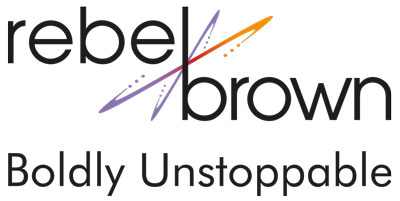Resistance to change is part of being human. It’s the result of an instinctual response that triggers a chemical reaction that drives us to resist whatever change is coming at us.
Learning to lead around these instincts and reactions fuels our ability to create an organization that adapts and innovates.
Here’s how to do just that.
Change in Business
When a change in business is presented to our unconscious mind, we see that change as a threat and we either resist or avoid it. We also seek the safety and comfort of the status quo. That’s part of the status quo bias, which is another instinctual mindware program related to the threat response. When we see a change, our threat response is activated and we hang onto “the way we’ve always done it”, even when “it” isn’t working and our businesses are suffering.
In the middle of that threatening situation – we instinctively seek the safe and known. Even if the downward spiral continues.
Leading Into Change
Thanks to modern science and discoveries about human behavior, we have the insights and techniques to lead our teams to accept and even relish the changes we need to sustain successful growth.
How? Here are three simple steps to lead successful change.
Diss the status quo.
If our status quo seems safe and comfie, we’ll head right to it in times of change, digging in like donkeys. When our human minds see that status quo is a potentially unsafe place – we will begin to look for new options. That’s why the first step is to shift the perception of the way you’ve always done it.Here are some ideas on how to do just that.
- Make the status quo less appealing by pointing out the inherent challenges, risks, and the downside potentials of remaining in that very status quo.
- Point to competitors or businesses inside or outside your industry that have shifted away from the status quo and into more success.
- Identify other vendors who didn’t shift and show the negative results.
The idea is to make sure your teams feel as though they have a choice between the status quo or change – but make the status quo an obviously poor choice. But be careful and don’t scare your teams. That will send them into full blown status quo bias and they won’t change. The idea is to loosen the power of the status quo with a bit of reality, not increase their threat response. Be thoughtful.
Focus on the upside.
As humans we are programmed to focus on the problems, especially when it comes to the problems driving our need for change. I have seen so many organizations in change, with leaders explaining the need for the change based on problems, threats, bad stuff happening and more woe is me discussions. All that focus on the problems serves to instill more threat responses as we focus on what’s wrong, failing or just plain scary.
When leading change within your teams or organization, focus on the upside from the changes. Share details about the powerful solutions and the positive results that will come with the change. Talk about others who have experienced change that resulted in great things happening. This solution-oriented focus shifts the human mind into a positive and open state. That’s when creativity and excitement begin… and successful change follows.
Ask questions to get people involved.
We’ve all had leaders tell us what and how we will change, making statements that sound like there’s no option. It didn’t feel good, did it? Statements serve to narrow the mind, limiting our choices and responses. When someone tells you what you will do, you don’t feel involved or empowered, now do you?
Instead of making those statement, ask questions! Questions open the mind to seek more ideas and option. Questions also empower a person to feel involved and part of their change.
When speaking to your employees about a needed change – ask for their inputs. They know their roles best of all, so ask them what they believe needs to change for better results. Get them involved and open their mind with questions. This simple shift can and will increase your teams’ willingness and enthusiasm for making changes.
The Bottom Line
Change is a given within any organization. As we all know, leading successful change is the key to creating competitive advantage for your organization. Use these three simple techniques and watch the results in your own teams.
Before you know it – change will become and inherent and powerful force in your organization’s success.
Check out this video for more insights on leading successful change.







9 Comments
Runwright
March 5, 2015 - 8:24 amInertia is the strongest force to overcome in relationships and career but change is always happening around is. Great post! I am going to share it with my followers and also so I can reread it often, myself.
rebel brown
March 6, 2015 - 1:14 pmTHanks much for stopping by and sharing!
I see inertia as a by product of the ‘freeze” aspect of the flight or fight instinct. When we feel we can’t run or fight – we freeze. Dig our heels in like donkeys to avoid any kind of hreatening situation = aka change. When leaders shift out of old school beliefs and learn how humans really are wired in our minds – we can lead around the instincts and programs that drive inertia and resistance and step into innovation and change. we have the knowledge thanks to neuroscience. The challenge now is to CHANGE our leadership beliefs away from the old school and into what we now know to be true!
THANKS for sharing! I appreciate your kind words!!!
Tom Pryor
March 6, 2015 - 3:44 amWhen someone asks me the steps to successful change, I reply:
Step 1: Dissatisfaction with the current situation.
Step 2: Awareness of a better way.
Step 3: Belief you can implement the better way.
I like your three too. Would you agree your three are a, b & c of Step 3?
rebel brown
March 6, 2015 - 1:10 pmHi Tom
Thanks for stopping by.
actually – I dont see my three as a subset of your #3. Seems to me we’re talking about different issues. Im talking about how the human mind drives the resistance to change – and applying neuroscience techniques to share 3 techniques to shift folks away from the inherent mind programs that cause humans to resist change in the first place. Which is a different topic and foundation than your 3 conscious steps.
As I explain to clients, conscious mind is the slave to unconscious mind. So until you shift away from the unconscious resistance triggers that filter your conscious reality away from change and the new – it doesnt matter what you try to do consciously. You’re still only working with a limited perception/subset of the potential data with your conscious mind. Since your unconscious mind controls your reality and the data your conscious mind is given to process.. You have to change the sources of and the actual data before you can change the conscious thinking and behavior
Hope that makes sense.
John Bennett
March 9, 2015 - 8:20 amThe worst phrase for me among many horrible phrases: “the way we’ve always done it.” I’m reminded, as I most often am, of an Albert Einstein quote: “We cannot solve our problems with the same thinking we used when we created them.”
Vincent Miholic
March 9, 2015 - 12:20 pmThat Einstein quote sent a ripple through my webbed feet: probably should add another basic variable beyond reptilian factor: schema theory. We feel very comfortable in the meanings (truth is beauty, perception is reality department) each of us construct and which we protect zealously, even as we encounter new experiences and information. Daily, our cognitive webs are either rejecting or accommodating new information, usually rejecting to protect and strengthen previous conceptions (or misperceptions), much to our detriment, since we will subconsciously reject irrefutable information so that we don’t have to notice breaks in the web needing repair. Ever been courageous enough to have a debate with a zealot from an opposing political party? Once information and experiences become compartmentalized, opening that box? Very difficult, bordering on epiphany territory (hidden becomes evident, FOX versus MSNBC meets The Daily Show). Because it’s also hard wired into self & group preservation, we forget to reteach and reinforce that change and adaptation are also constants to our existence.
THE Benefits Of An Advisory Board And Meetings | How To | DO’S AND DON’TS – Education: Digital CitiZENship, CyberSecurity by Gust MEES
June 8, 2015 - 10:33 am[…] How to Make Change a Desirable Thing […]
How to Make Change a Desirable Thing – Rebel Brown | eLeadership | eSkills | teaching knowledge and creativity
June 9, 2015 - 8:08 am[…] Sourced through Scoop.it from: rebelbrown.com […]
UnLEARNing THE OLD, ReLEARNing, LEARNing To LEARN / How To!? – Education: Digital CitiZENship, CyberSecurity by Gust MEES
November 30, 2015 - 9:23 am[…] How to Make Change a Desirable Thing […]